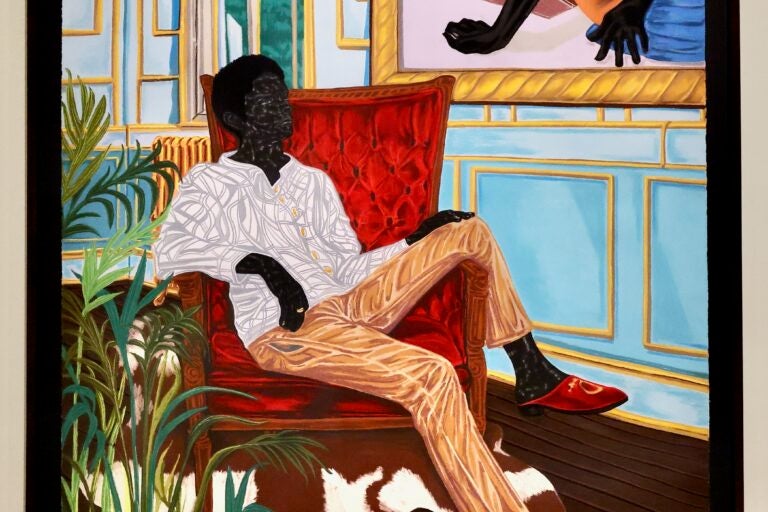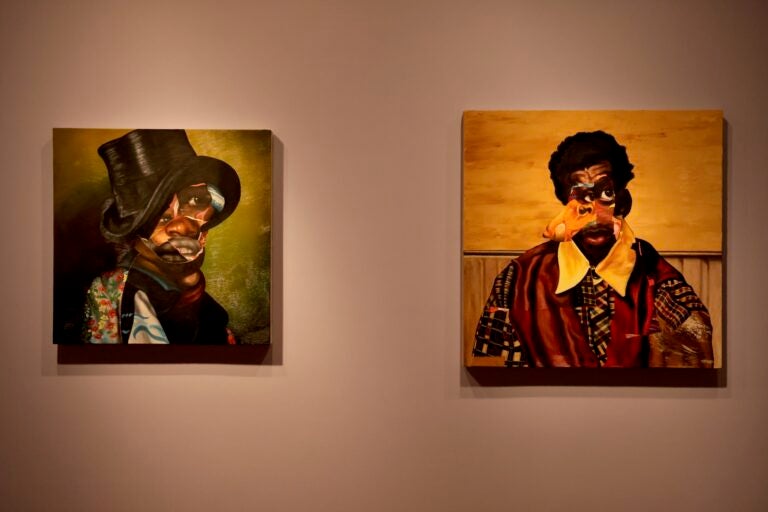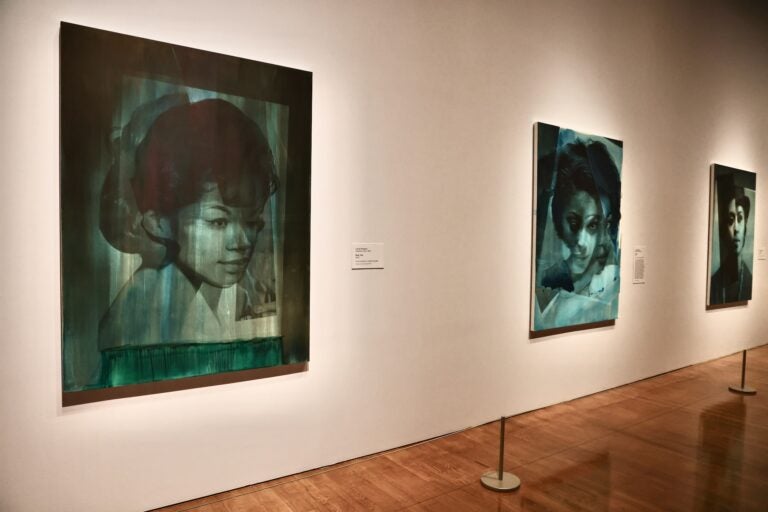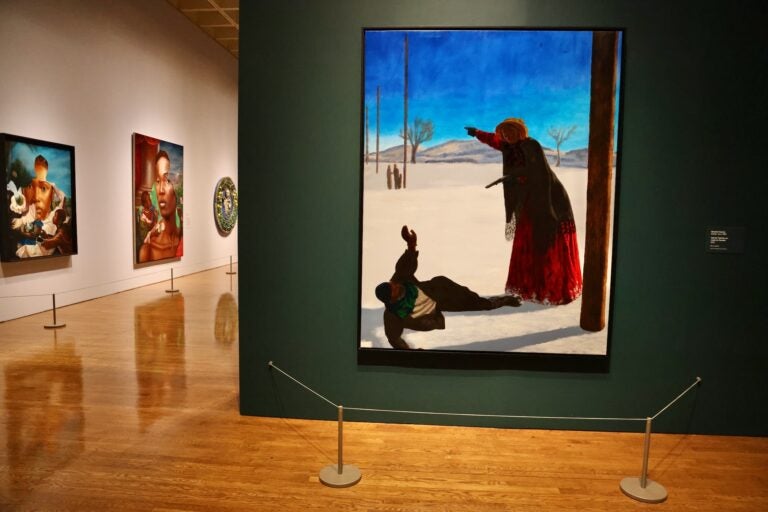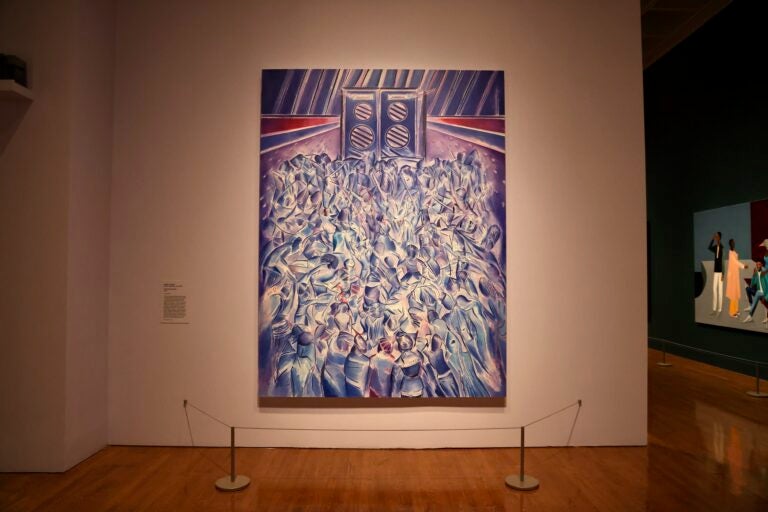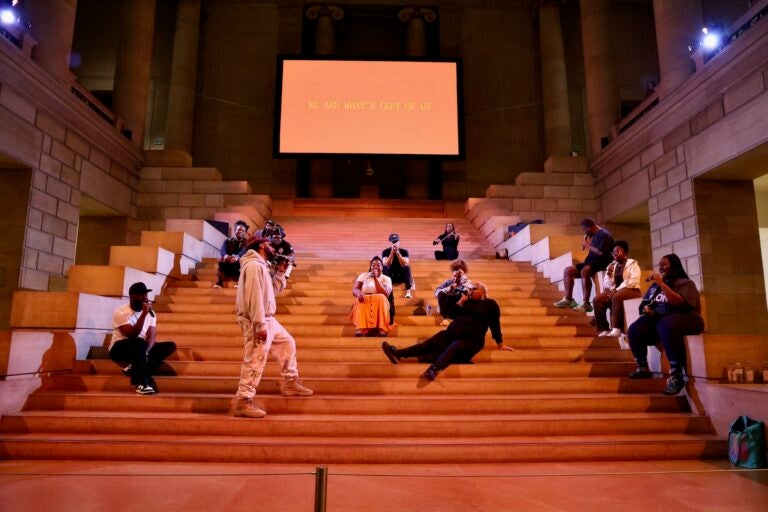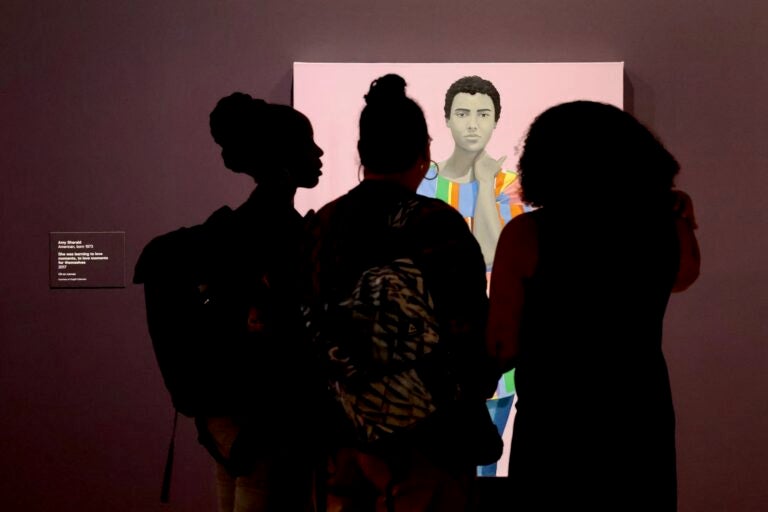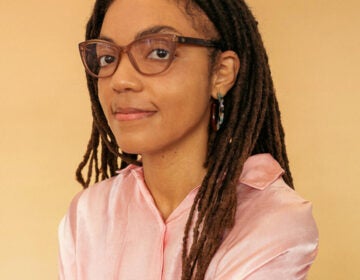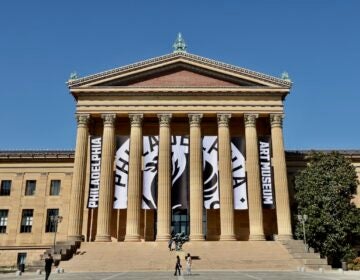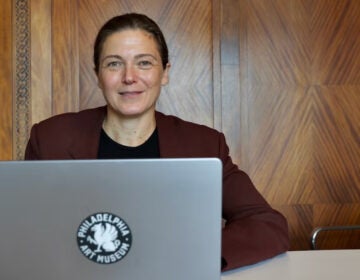Exhibition of Black figures at the Philly Art Museum is right on time
“The Time Is Always Now” features Black contemporary artists reimagining Black bodies.
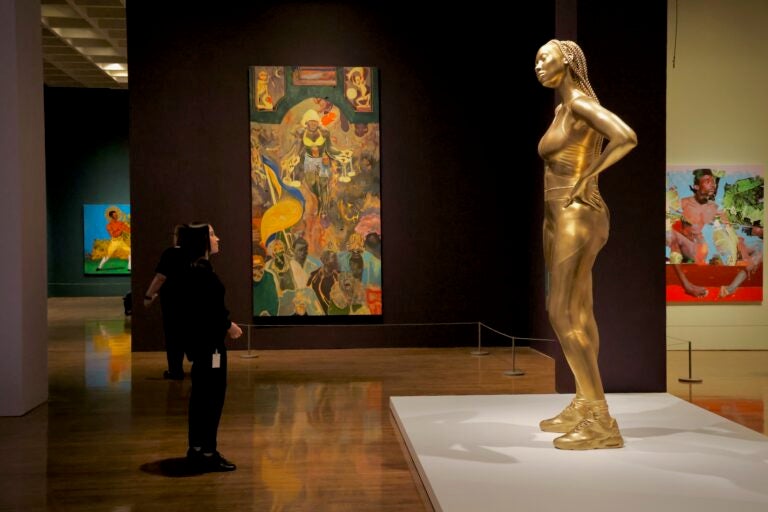
A vistior to the Philadelphiia Museum of Art stops to gaze at Thomas J Price's larger-than-life sculpture of a woman, titled ''As Sounds Turn to Noise.'' It is part of an exhibit, ''The Time Is Always Now,'' featuring work by 28 contemporary Black artists portraying Black figures. (Emma Lee/WHYY)
From Philly and the Pa. suburbs to South Jersey and Delaware, what would you like WHYY News to cover? Let us know!
The new temporary exhibition at the Philadelphia Museum of Art, “The Time Is Always Now: Artists Reframe the Black Figure,” features work by 28 contemporary Black artists depicting life and culture through sculpture, drawing and painting.
Many of the artists expand the ideas and practices typical in illustrating Black bodies. The first painting visitors see upon entering the galleries is a woman in a rainbow-colored dress whose skin tone is close to stone gray. Next to her are figures by Kerry James Marshall with impressively deep and rich, dark skin tones.
Deeper in the exhibition, Nathaniel Mary Quinn’s portraits have faces that are warped and misshapen, evoking irrational and surrealistic dream states. Further on is an 8’ tall statue of a Black woman — a fictitious composite pieced together from many images artist Thomas Price collected — dressed in leggings and a running bra rendered in a polished gold-colored bronze.
“It’s not a portraiture show. There is no obligation to say, ‘I recognize this person,’” said curator Ekow Eshun. “You might recognize what these artists are doing to describe with complexity, with nuance and with richness the Black being and the Black experience.”
“It’s not about the figure,” he said. “It’s about the feeling,”
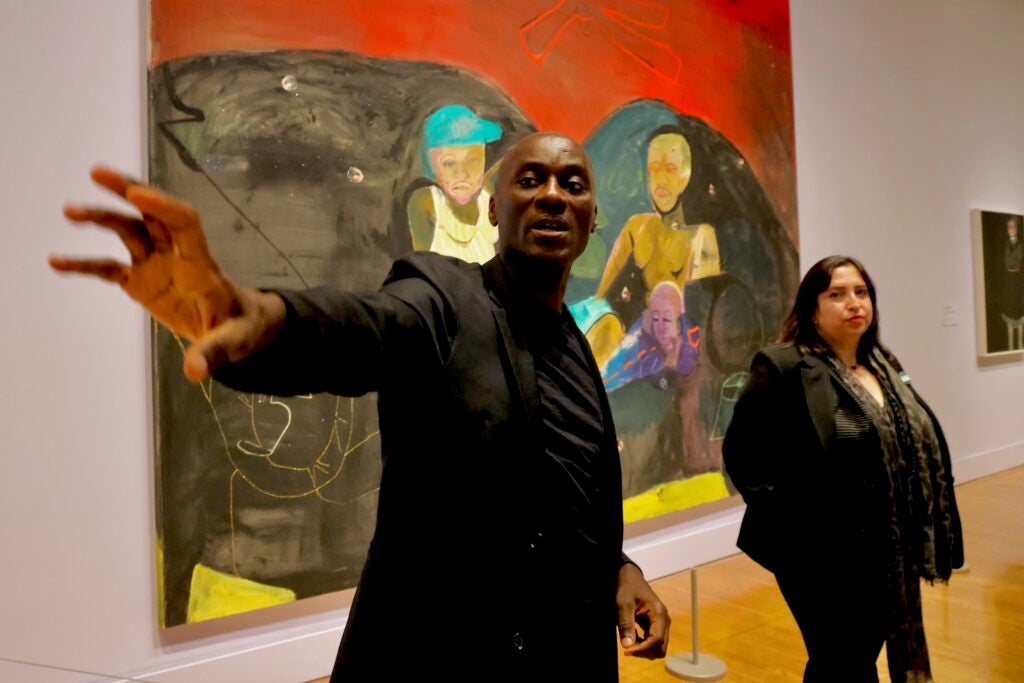
“The Time Is Always Now” is a touring exhibition that originated at the National Portrait Gallery in London, where Eshun is based. Several years ago, he noticed a “flourishing” among Black and African diasporic artists around the world to depict the Black figure in imaginative ways.
Brooklyn-based Lorna Simpson, for example, culls vintage fashion photography from mid-century issues of the magazine Ebony, and manipulates the figures by tearing and collaging the images and overlaying them with saturated color to suggest both a warm nostalgia and a contemporary investigation of gender and race standards.
The Nigerian American artist Toyin Ojih Odutola shows imagined Nigerian wealth spread across three paintings in the exhibition, showing contemporary Black figures in an opulent palatial setting. The artist wonders: What would a Nigerian upper class look like had its lineage not been interrupted by the trans-Atlantic slave trade?
Many artists in the show draw out Black figures in the historical art canon. The British artist Barbara Walker replicates historic paintings that feature central white subjects being catered to by marginalized Black figures. She washes out most of these images by rendering the central subjects as white-on-white embossed lines, making them essentially invisible as the remaining Black subjects on the edges dominate the image.
Eshun said many of the artists in the show are working with ways in which Black figures have been misrepresented in art history.
“But they are also making central the position and perspective of Black people in relation to today’s history,” he added. “That’s really what’s going on: They’re remixing aspects of art history in order to place, as a central subjective role, Black presence.”
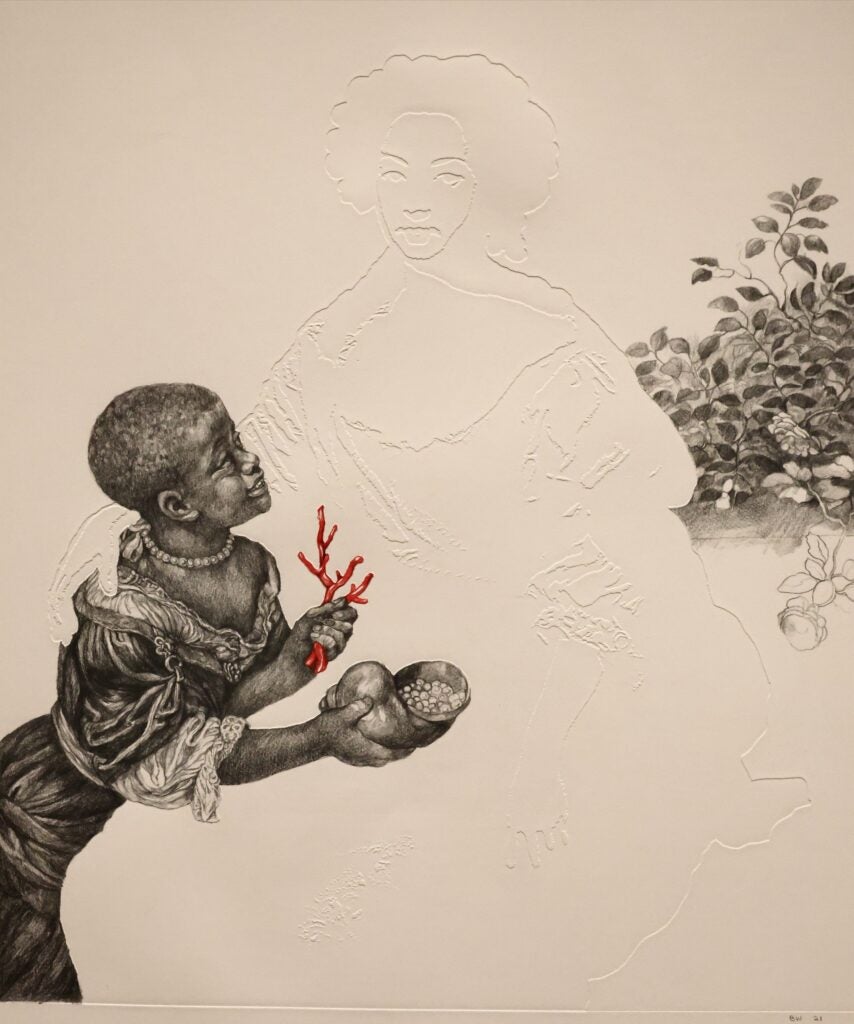
“The Time Is Always Now” gets its title from James Baldwin (“There is never a time in the future in which we will work out our salvation … The time is always now”) and informed, in part, by the Philadelphia Black writer and social scientist W.E.B. DuBois, who in 1903 wrote about a “double consciousness,” or a feature of the Black psychological experience that is aware of how one perceives oneself while simultaneously forced to grapple with how one is perceived by the rest of society.
“What he called a ‘twoness,’” said PMA curator Erica Battle, who collaborated with Eshun on the Philadelphia leg of the exhibition. “Essentially, having a sense of self but then being othered as you walk through a predominantly white society.”
The Philadelphia iteration of “The Time Is Always Now” differs slightly from the exhibition’s other stops. Battle added six additional local artists to the exhibition, including works by Roberto Lugo, who crafts classical ceramics and dishware featuring Black and Latino figures, and Johnathan Lyndon-Chase, whose abstract figurative work centers Black queer camaraderie and intimacy.
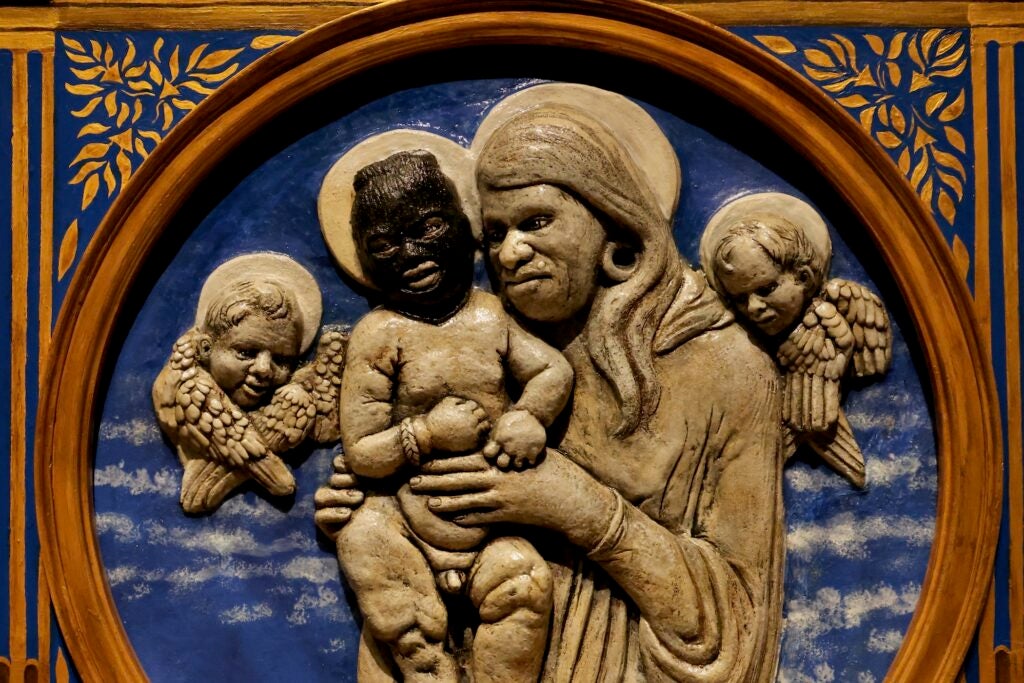
Battle also dipped into the PMA’s collection, adding additional pieces by featured artists Danielle Joy McKinney and Arthur Timothy to the traveling show.
“That was a really big question for us: What do we have in our collection that we could add?” Battle said. “Between those works and adding our Philadelphia artists we already know so well, who’s work really fits the particular remit of the show, we’re putting our own stamp on the exhibition.”
“The Time Is Always Now: Artists Reframe the Black Figure” will be on view at the Philadelphia Museum of Art until Feb. 9.

Get daily updates from WHYY News!
WHYY is your source for fact-based, in-depth journalism and information. As a nonprofit organization, we rely on financial support from readers like you. Please give today.



